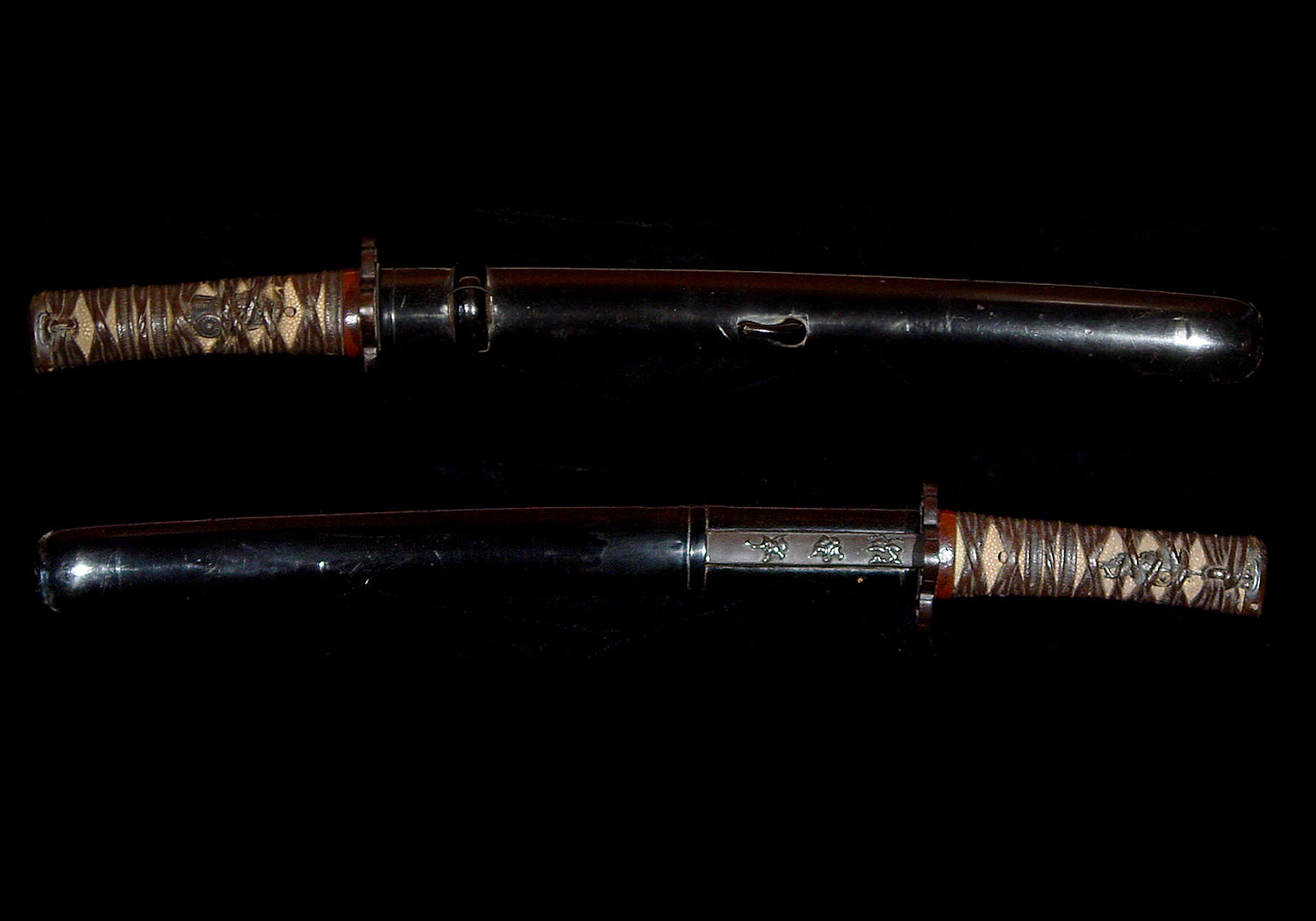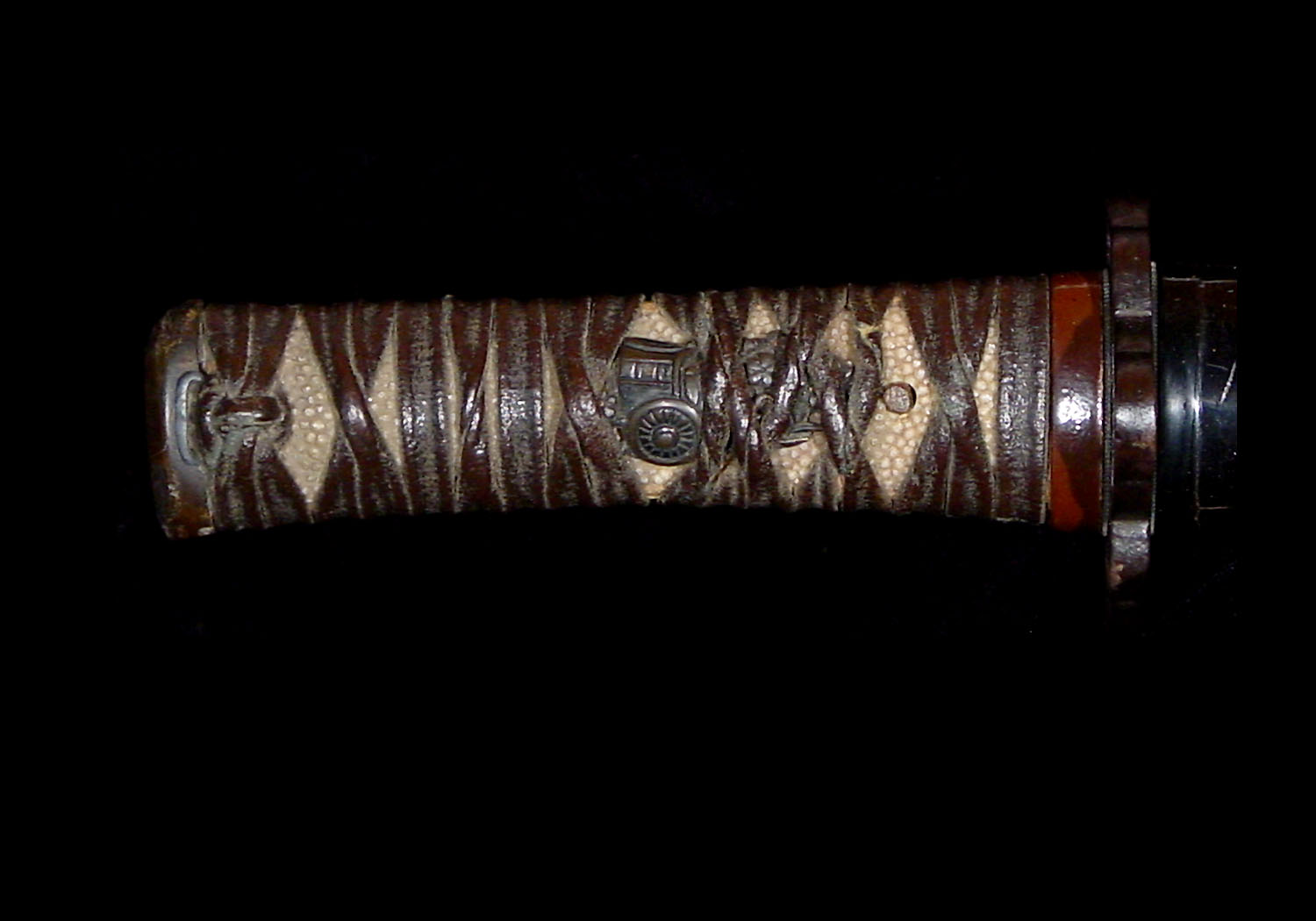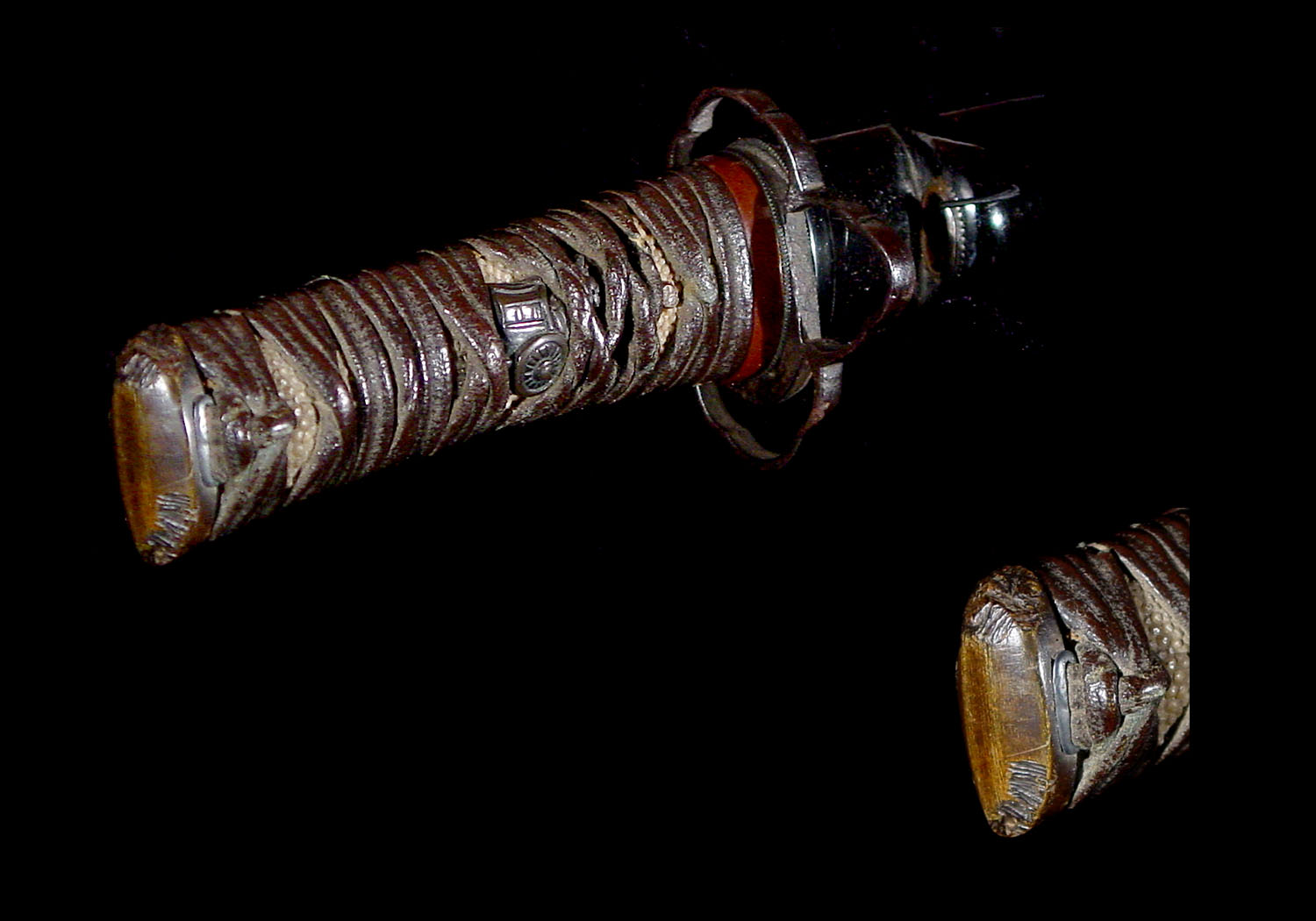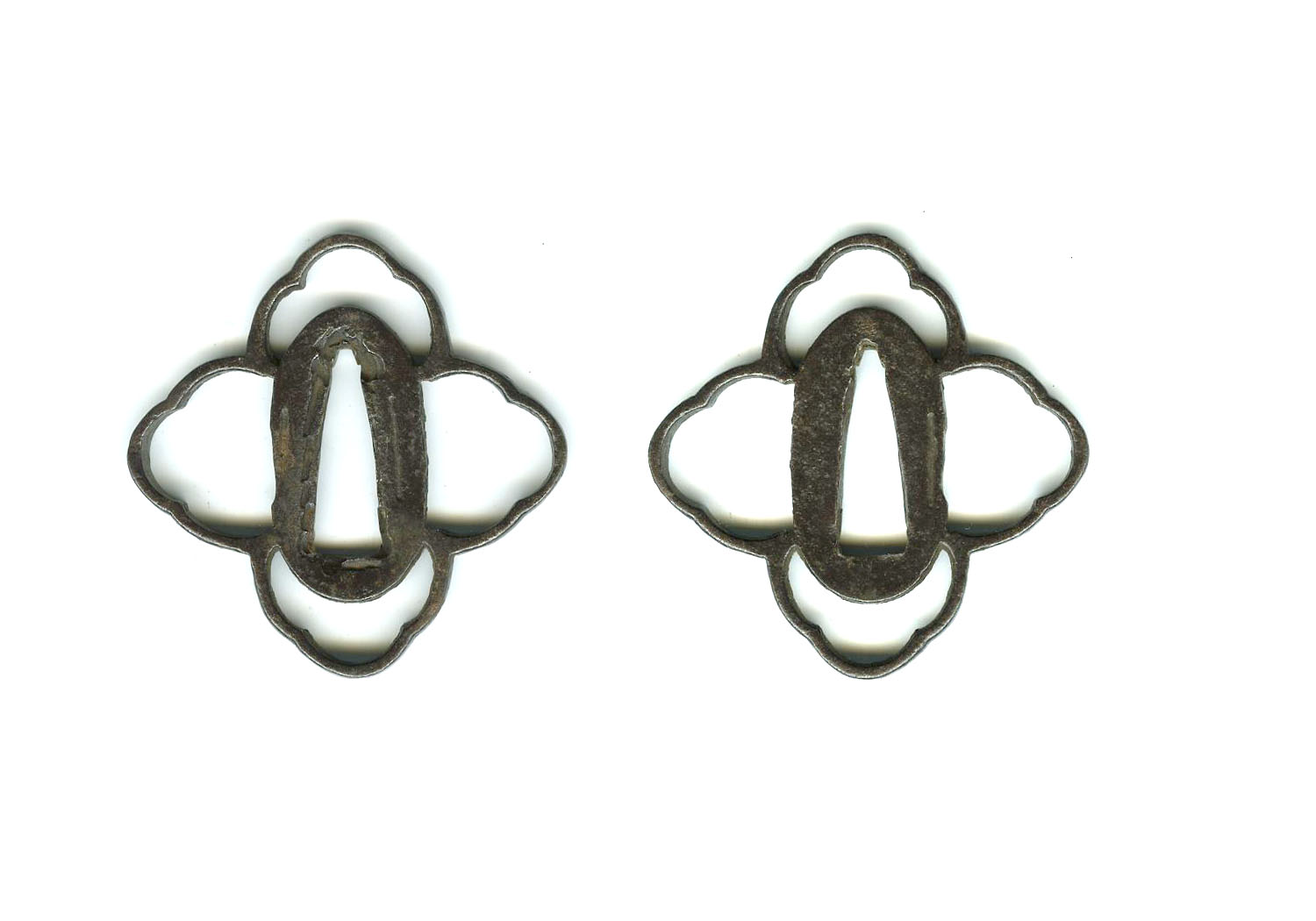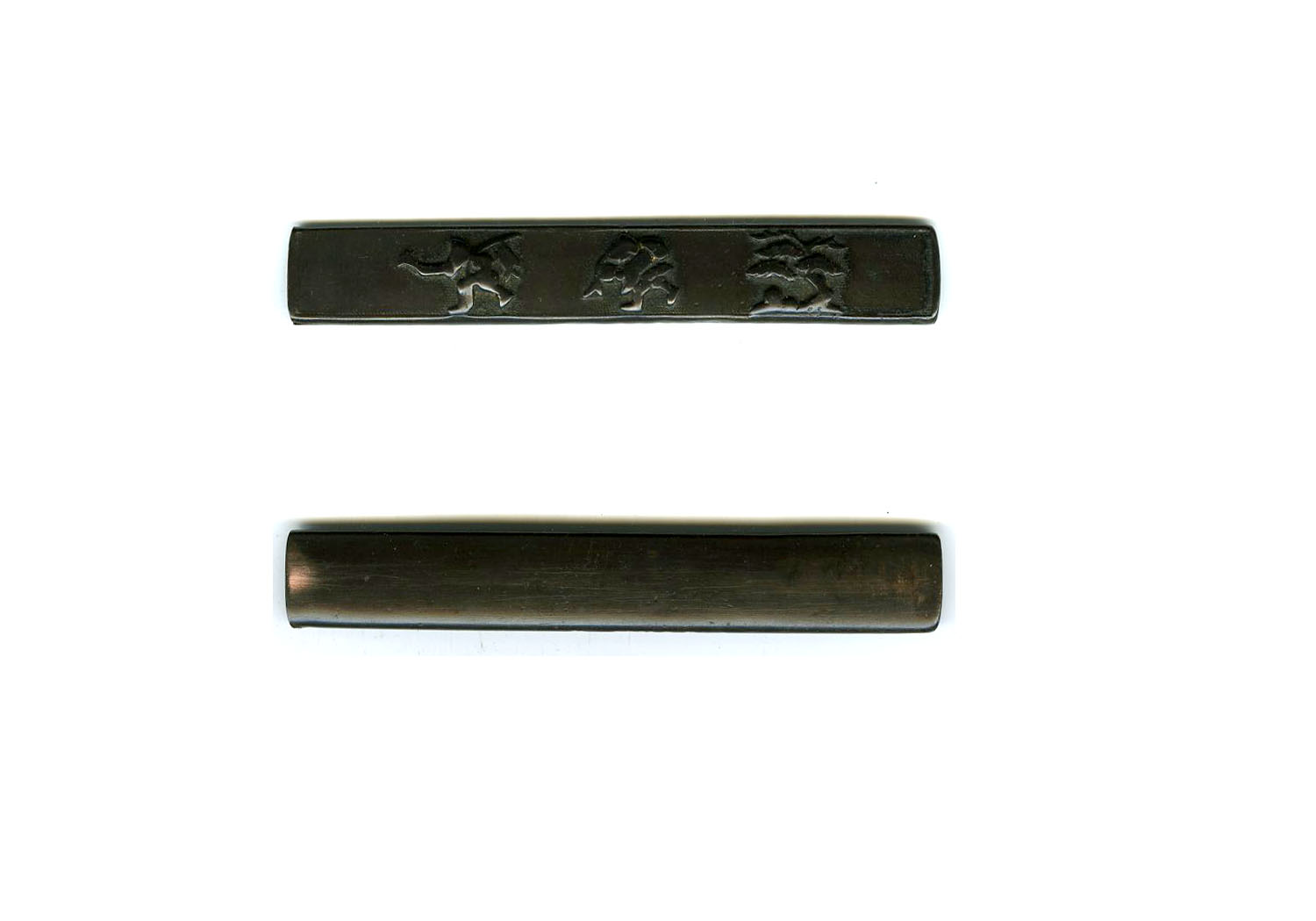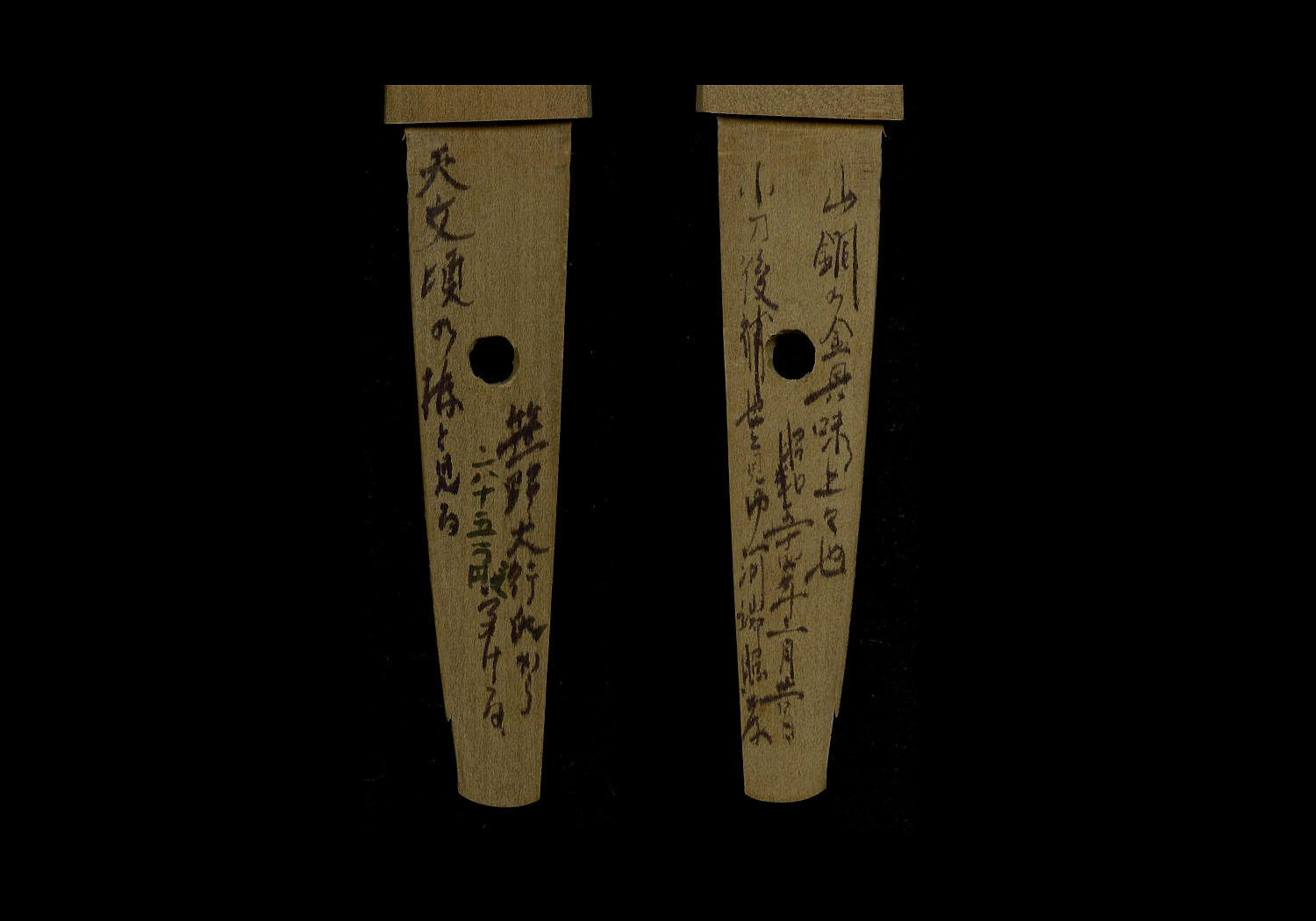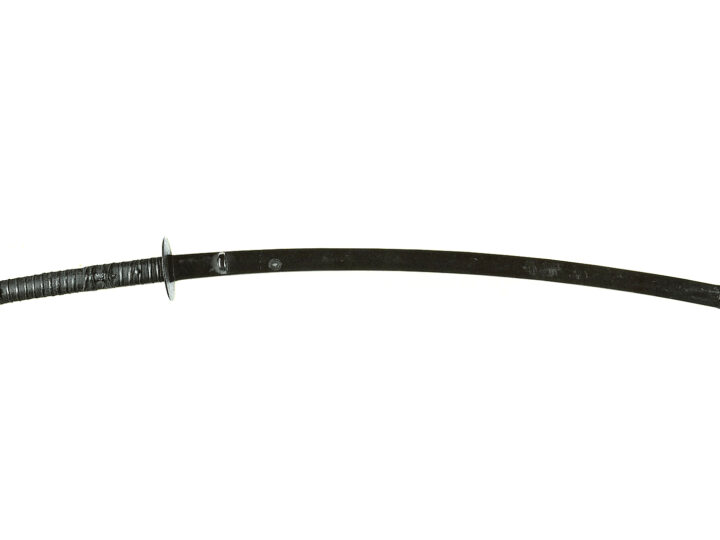
This is a rare item, indeed. It is an intact and original koshirae from the middle Muromachi era of around 1532. It held a hira-zukuri ko-wakizashi with a nagasa of exactly 12 inches or 30.5 cm. The overall feeling of the koshirae is very subdued and the quietness of the various parts makes one believe that this koshirae belonged to a mid-level Samurai. While a good number of high level Samurai and Daimyo koshirae from this period and later survive having been cared for and passed down through generations, finding this type of koshirae is a rare pleasure as most were lost or destroyed after much use.
The saya is plain black urushi that shows great age. The fuchi is yamagane that is wrapped in thin leather and then covered with a thick coat of brownish-red urushi. The kashira is horn. The kashira shows its age wonderfully. It looks as though it was used by its owner(s) over the ages as a tool to loosen tight objects. This can be easily seen in the photos. The menuki are shakudo and depict flower carts. They are somewhat oversized for the tsuka. This size shows that the original owner was more interested in insuring that the menuki helped provide a strong and sound grip on the tsuka as opposed to the later Edo period when menuki became much more ornamental than functional. The tsuka is sparsely wrapped in a thick rawhide that has been put on using a twisting style that is unusual and interesting. The rawhide (leather) has been lacquered for protection against the elements. The same shows no large nodules which further points to the utilitarian as opposed to lavish desires of its owner.
The tsuba is iron sukashi possibly of the Owari school. It is four lobed measuring 6.4 cm by 6.4 cm. Again, not fancy but certainly of excellent quality and utilitarian. The kozuka has been attributed by Sasano Masayuki to the Goto school. It is shakudo and depicts a pine tree and two individuals carrying their loads of goods. This kozuka is so old and well used that most of the nanako has worn down to a smooth surface. Amazing!
The nakago of the tsunagi has an attribution written by Sasano Masayuki in March of 1979 detailing much of the information presented above. He even included a written appraisal of this koshirae at ¥650,000 in 1979. While the Tokubetsu Hozon papers describe the individual parts, they do not go so far as to make the detailed attributions that Sasano Sensei has made. I feel his thoughts must be taken as valid.
PRICE: SOLD

